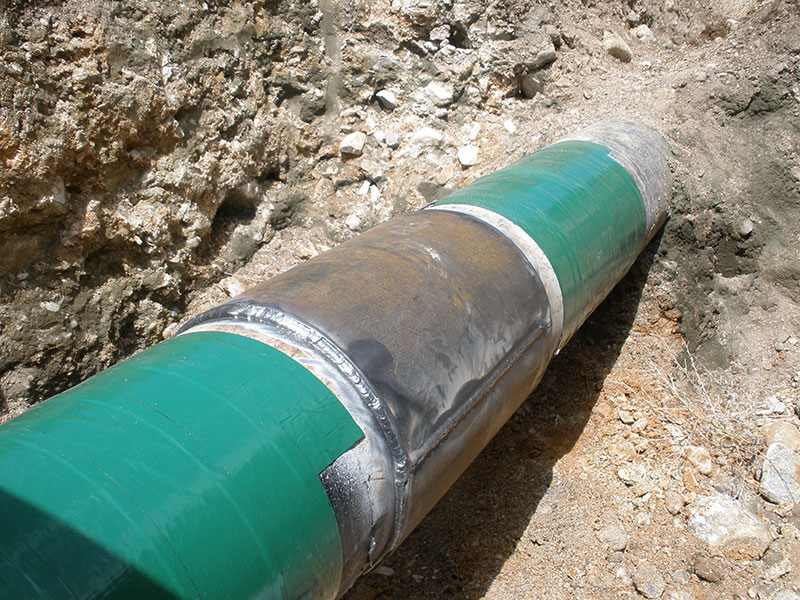Advanced Pipeline Welding Inspection: Strategies for Identifying Problems
Advanced Pipeline Welding Inspection: Strategies for Identifying Problems
Blog Article
Recognizing the Basics of Pipe Welding Assessment: Critical Factors for Assessing Weld Quality and Preventing Failings
In the world of pipe welding inspection, the risks are indisputably high, requiring a detailed understanding of basic concepts to make certain weld high quality and reduce failure risks. Various crucial factors come into play, including the option of appropriate products, the application of sophisticated assessment methods, and the acknowledgment of prevalent welding defects.
Importance of Weld Quality
The integrity of a pipe is fundamentally dependent on the high quality of its welds, making weld top quality an essential element in guaranteeing efficient and risk-free operation. A pipeline weld acts as a joint point where materials are signed up with, and any deficiencies in this field can cause substantial architectural weak points. Poor weld high quality can cause leakages, ruptures, and disastrous failings, posing major safety and security dangers and ecological risks.
A number of elements add to the top quality of a weld, including the option of welding procedure, the skills of the welder, and the conditions under which the welding is executed - Pipeline Welding Inspection. Inadequate preparation, incorrect warmth input, and contamination can jeopardize weld integrity, resulting in concerns such as porosity, incomplete fusion, or cracks. Consequently, rigorous quality assurance procedures should be applied throughout the welding procedure to mitigate these risks
Additionally, the long-lasting performance of a pipe is heavily affected by the durability of its welds. Top quality welds not just improve the general stamina of the pipe however also extend its life span, decreasing the requirement for expensive repairs and downtime. Therefore, making certain exceptional weld high quality is paramount in pipeline design and maintenance practices.
Key Assessment Methods
Guaranteeing weld top quality necessitates the implementation of reliable assessment methods to recognize prospective imperfections before they cause failures. Pipeline Welding Inspection. Amongst one of the most extensively used approaches are visual assessment, radiographic testing (RT), ultrasonic testing (UT), and magnetic fragment screening (MT) Each technique is and serves a distinctive purpose picked based upon the specific requirements of the pipeline job
Visual examination is the initial line of protection, permitting assessors to evaluate surface area conditions, positioning, and general handiwork. Radiographic testing provides a detailed sight of interior weld integrity by using X-rays or gamma rays to detect subsurface defects.
Ultrasonic testing employs high-frequency sound waves to review the thickness and integrity of welds, making it excellent for detecting internal stoppages. Magnetic particle screening is a trusted method for determining surface and near-surface problems on ferromagnetic materials by applying electromagnetic fields and fine ferrous fragments. By using these crucial examination methods, pipeline welding examiners can guarantee the finest quality requirements are preserved, eventually causing much safer and more trusted pipe systems.
Usual Welding Defects
In the realm of pipeline welding, comprehending usual welding defects is critical for keeping architectural stability and security. These problems can lead to disastrous failings otherwise determined and resolved quickly. Among the most widespread issues are porosity, which happens when gas entraps in the weld metal, creating voids that damage the joint. One more considerable issue is lack of blend, where the weld metal does not appropriately bond with the base material, jeopardizing the joint's toughness.

Splits are informative post likewise a vital concern, manifesting in different types such as hot cracks, cold fractures, and origin splits. Each type positions special obstacles and needs details evaluation methods for detection. Undercut is one more defect that can lower the weld's cross-sectional location, resulting in stress focus factors, while slag inclusion occurs when non-metallic product comes to be trapped in the weld swimming pool, adversely influencing the mechanical residential properties of the weld.
Furthermore, wrong bead shape can cause uneven anxiety distribution. Recognizing these common issues is necessary for assessors and welders alike, as early discovery and improvement are important to making sure the longevity and dependability of pipeline systems.

Materials and Their Impact
Selecting the appropriate products for pipe welding substantially affects the general efficiency and integrity of the bonded joints. The choice of base metals, filler materials, and coatings plays a critical duty in figuring out the toughness, deterioration resistance, and sturdiness of the welds. For example, carbon steel is commonly utilized for its equilibrium of stamina and cost, but it may be susceptible to rust in particular settings, demanding using safety layers or corrosion-resistant alloys.
Additionally, different metal welding requires cautious factor to consider of thermal development properties and potential galvanic rust. The compatibility of products can considerably influence the microstructure of the weld, resulting in variations in mechanical residential properties. As an example, stainless steel supplies superb corrosion resistance but may require specific filler materials to guarantee an audio weld joint.
In addition, the influence of temperature level and ecological problems on material choice can not be taken too lightly. High-strength steels may shed ductility at elevated temperatures, while low-temperature applications could require products with boosted strength. Inevitably, recognizing the implications of product options is why not try here essential for attaining optimal weld top quality and stopping failings in pipe systems.

Regulatory Requirements and Conformity
Regulatory requirements and compliance play a pivotal duty in pipeline welding, establishing the structure within which reliable and risk-free practices are preserved. These requirements are established by various companies, consisting of the American Culture of Mechanical Designers (ASME), the American Welding Culture (AWS), and the Pipeline and Hazardous Products Safety Management (PHMSA) Abiding by these guidelines makes sure that welding procedures satisfy the called for top quality and safety and security criteria.
Conformity with regulatory standards is necessary not only for ensuring the stability of the welds yet likewise for securing the atmosphere and public security. Examiners are entrusted with confirming that welding procedures follow these requirements via extensive examinations of both the processes and the final welds. This entails assessing welder certifications, welding treatments, and the materials used.
Failing to follow well established policies can bring about substantial repercussions, including expensive repair work, legal obligations, and catastrophic failings. Consequently, companies have to integrate conformity into their functional techniques, cultivating a culture of security and top quality. Regular training and audits are crucial elements in preserving adherence to these governing requirements, making sure that all workers are well-informed and outfitted to promote the highest degree of pipe welding top quality.
Verdict
To conclude, a thorough understanding of pipe welding examination is crucial for ensuring weld top quality and stopping failings. By utilizing key evaluation strategies and identifying common welding flaws, examiners can effectively examine the honesty of welds. Consideration of material selection and adherence to regulative criteria additionally enhance the reliability and safety of pipeline systems. Ultimately, these practices add to the prevention of leakages and catastrophic failings, her comment is here underscoring the critical significance of strenuous examination processes in pipe construction and maintenance.
In the world of pipe welding inspection, the stakes are indisputably high, demanding a complete understanding of fundamental principles to ensure weld high quality and alleviate failure dangers (Pipeline Welding Inspection).The stability of a pipe is fundamentally dependent on the top quality of its welds, making weld high quality a critical element in ensuring efficient and risk-free operation.Several variables contribute to the high quality of a weld, including the choice of welding process, the abilities of the welder, and the problems under which the welding is done. Undercut is an additional problem that can minimize the weld's cross-sectional area, leading to stress and anxiety concentration factors, while slag incorporation takes place when non-metallic material comes to be entraped in the weld pool, adversely impacting the mechanical residential or commercial properties of the weld
In conclusion, a thorough understanding of pipeline welding examination is important for making certain weld top quality and protecting against failures.
Report this page